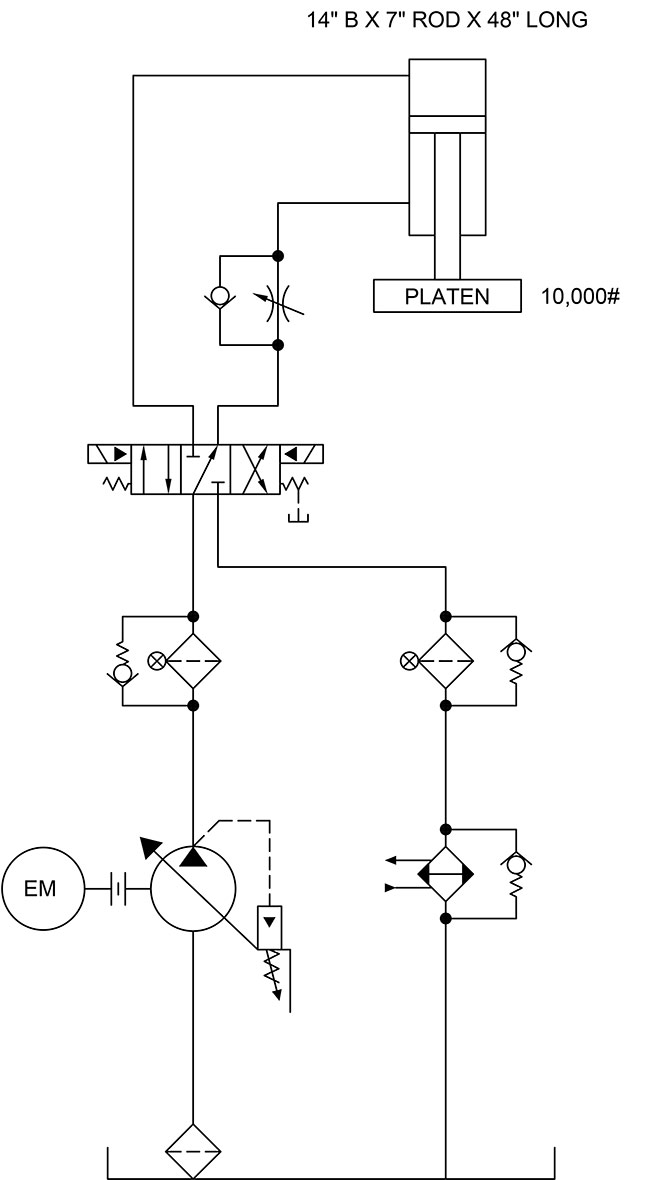This article was updated May 8, 2022 with the solution to this challenge.
By Robert J. Sheaf, Contributing Writer
Troubleshooting Challenge is a new regular column in which Sheaf will highlight a situation where he was called to consult on a malfunctioning system or machine, provide a circuit to highlight the machine’s functions and ask you, the reader, to troubleshoot the problem. Readers are encouraged to engage with Sheaf to discuss the problem.
A new hydraulic system was installed and commissioned with very little problems. However, after about four weeks the rod gland failed on the cylinder. Inspection showed the threads were stripped on the bronze gland. The customer insisted that the distributor supply a new cylinder which they did, but the new cylinder also failed after six weeks of operation.

The circuit attached had a 45-gpm pressure-compensated pump driven by a 100 hp, 1,800 rpm electric motor. The compensator on the piston pump was confirmed to be set at 3,000 psi and the cylinder was rated for 3,400 psi operating pressure.
Can you identify what was the problem? We welcome responses of all kinds directly to Robert Sheaf at rjsheaf@cfc-solar.com or to mgannon@wtwhmedia.com. The solution will be provided next month, in conjunction with our April 2022 issue.
Solution
A failing rod gland is typically caused by over-pressurization. The 14-in. bore cylinder with a 7-in. rod has a 1.33 ratio when you divide the cap area by the annulus area. Meter out flow controls will cause the annulus area to intensify close to 4,000 psi with 3,000 psi on the cap end. This usually is acceptable for most cylinders. However, the pump’s compensator needs about 25 to 40 msec to fully compensate.
Based on a system I encountered several years ago, an installed pressure transducer showed a 1,000 psi pump pressure had a 7,000 psi momentary pressure spike each time the cylinder bottomed out, breaking the pump’s swash plate casting. Installing a directly operated relief set to 3,250 psi solved the problem on this application.
The directly operated relief opens faster than the pump compensates, thus clipping the pressure spikes.
On the 1,000 psi system I previously encountered, adding the relief resulted in a maximum spike of an acceptable 1,700 psi.
Filed Under: Cylinders & Actuators, Trending, Troubleshooting